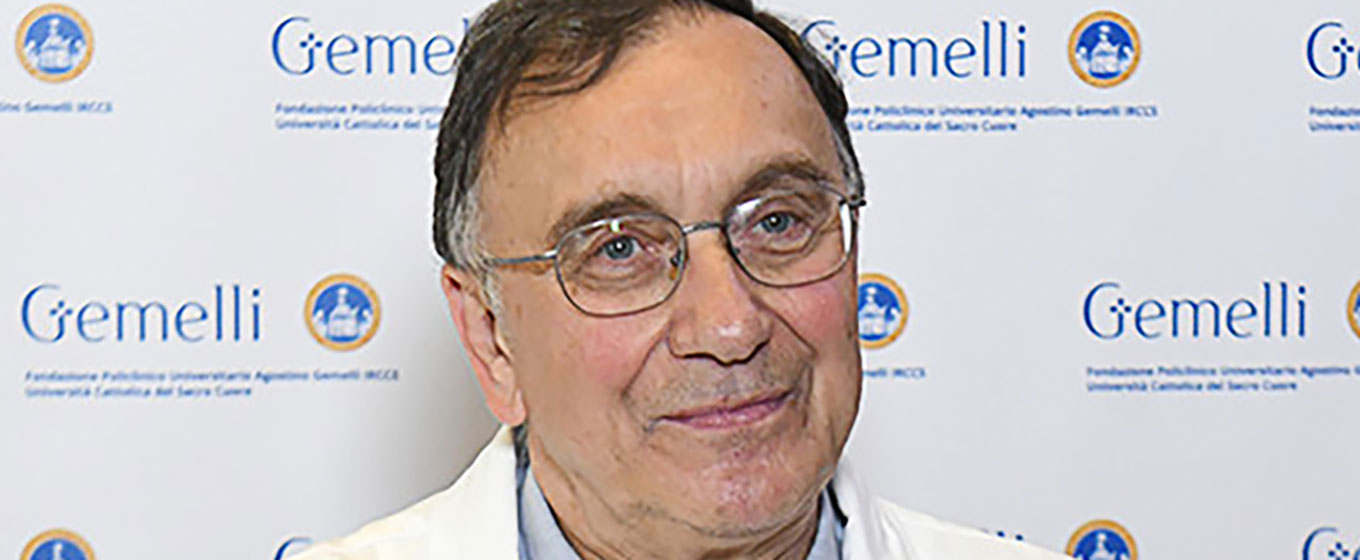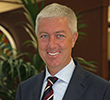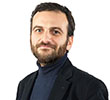Let’s talk about the guidelines. Professor Roberto Cauda

Professor Cauda has been at the forefront of the fight against the spread of COVID-19 since the outbreak of the emergency. In his call-to-action video at the beginning of the lockdown, the Director of the Infectious Diseases Unit at the Agostino Gemelli Polyclinic in Rome and Professor of Infectious Diseases at Università Cattolica del Sacro Cuore was firm in his advice to students, academic staff, and university workers to stay at home and play their crucial role by self-isolating. He was sure that everyone in the community would be responsible enough to follow the rules and help protect the public well-being. He said the period of self-isolation would not go on forever and that we would “bounce back soon and be better than before”.
Three months on and we are bouncing back. In the light of how the pandemic has evolved, the country is now seeing a substantial wide-scale reopening: the country has bid farewell to the nationwide closures, and social gatherings and activities are now paving the way back to a more normal life. Many cafes, shop, and restaurants are up and running again, albeit limited by strict health and safety measures. Residents don face masks as they stroll around parks, and make sure to observe social distancing. Although not yet at the zero-case scenario, Professor Cauda has high hopes that the main regions in Italy will soon be in a position to re-open to visitors.
How Phase Two will evolve in the coming days lies in the hands of the public. People will embrace their new freedom after being stuck at home for months, but should still be mindful of the basic safety measures that have been promoted since the early days of the pandemic. The goal is still to have zero new cases, not to induce a sudden spike in the spread of the virus.
This fall the Università Cattolica campuses will be welcoming back students, academic staff and administrative staff. Everyone will be charged with renewed vigor, ready to get down to work and study, whether it be to attend lectures in person, engage in interaction about lectures, or rework course programs and modes of delivery.
Amidst the on-going buzz around the comeback, there’s still a sense of wariness in the air, and this is evident from the 17-page university guidelines and safety measures in place for re-entry to the campus. The guidelines were drafted by Professor Cauda, along with the university executive, with the students and staff in mind. He is hopeful that the Cattolica community on campus will observe all the safety measures that have been laid down. The aim of this new set of rules and regulations is to allow for the smooth, safe operation of the University, and avoid any spread of the virus that would produce a spike in numbers. Professor Cauda points out that this is crucial: “the virus we’re facing is an airborne, transmittable, droplet-based disease. We must mitigate the rate of infection, and one way to do so is to be responsible enough to respect the new rules and regulations”.
The professor emphasizes the three key points that students, academic staff and other staff need to keep in mind: wear a face mask and gloves, wash your hands frequently, and observe one-meter social distancing. Despite recent debate on how effective wearing a face mask is in protecting the wearer, Professor Cauda is clear on what the science says: “Wearing a mask is an efficient way not to let the virus out. If we’re showing symptoms, it prevents us from transmitting it to other people. Even if the mask doesn’t protect us 100% from being infected, it’s a surefire way to contain and not allow the virus to multiply”. Wearing gloves can also be useful in containing the virus but it is always essential to wash your hands frequently and not to touch your face since the virus can enter the body via the eyes, nose and mouth. Finally one-meter social distancing is important for the safety measures to be of use.”
This set of rules and regulations reaches beyond the university grounds. The Cattolica community plays a pivotal role of being responsible citizens outside the university too as they observe the safety measures. Family members, friends or even the person standing in the supermarket queue may carry the disease without showing symptoms: the virus is hidden so it is essential to take as many precautions as possible to inhibit transmission.
It is unclear what will happen in the summer. Studies have been conducted to determine whether the combined effects of high humidity, high temperatures and UV rays might reduce the survival rate of the virus on surfaces and in transmittable droplets. The US Department of Homeland Security studies suggest that there is a 50% probability of the virus becoming inactive in about two minutes if exposed to direct sunlight and high humidity at room temperature. Under conditions away from heat exposure, the virus might survive for as long as 18 hours. This research is in line with the findings of a group of Spanish researchers, soon to be published, which report that clinical trials show that high temperatures and humidity reduce the spread of the virus.
A summer with reduced infection rates might be on the horizon, but Professor Cauda is cautious about supporting the claim that we will see a dramatic decrease of COVID-19 cases during the hot season. He reminds us that we all need to be properly informed and well prepared: “a zero-risk case does not exist in any type of disease, especially in airborne and transmittable ones. Our situation will depend on us and how effective our safety measures are, but no one can tell what will happen. In the meantime, we need to accept the idea that we are going to live with the virus”.
The cliché that “age is just a number” falls short in the context of the virus. Younger people may be able to fend off the virus more easily while the over 65s are more susceptible and succumb to many more symptoms. Furthermore, occurrence of asymptomatic cases is high so there can be a silent spread of the virus without any outward signs of contagion. This is another reason why it is important to observe all the published precautionary measures.
Turning to the Cattolica community, everyone who falls under the umbrella of the University is expected to take the precautionary measures seriously, and be flexible enough to adapt to any future changes. Professor Cauda says that the rules and regulations will be updated from time to time to be in line with any new scientific findings that involve the virus.
The University is gearing up for an influx of new students on campus this fall. To keep to the safety priority and avoid overcrowding in specific spaces, teams are working on an app so that students and staff can book their spot on campus. When places are taken up, other staff will continue to work from home and students will be able to see lectures live streamed on their devices. Cameras and specially developed software will be installed on campus so that lectures can be broadcast online with a feature that allows professors and instructors to respond to questions from students watching from home.
In order to help students and staff maintain social distancing, signage is being installed to control movement around the campuses and hand sanitizer posts will be positioned around the university. Student dorms will be monitored for compliance with safety measures and students visiting the campus libraries and cafeterias will be prompted to maintain social distancing. The overall objective of all these measures is obviously to ensure that the risk of the virus spreading inside the institution is reduced to a minimum. However, the university medical services are well-equipped to respond immediately should this prove necessary.
Professor Cauda points out that “Italy was one of the first countries to experience a high number of COVID-19 cases and from the experimental stage we were at, we have come to realize the basic dos and don’ts. This incident has brought the nation to a sense of preparedness and I think we are more suited to face the challenges of the second wave, should there be one”. Referring to the South Korean test and trace model to contain the spread of the virus, the professor emphasizes the importance of reducing the risk of spreading the virus to an “acceptable level.” A test and trace system heads off the potential spread of the virus by tracing anyone who has been in contact with those testing positive and requiring them to self-quarantine.
With the guidelines he has been holding now placed back on his desk, the professor untangles the cord of his earphones, pauses for a second before offering the advice that we should not be afraid. “As long as you know the enemy, you can think about your strategy in advance: how to tackle the enemy, what weapons to use, and where to start. Since we have the necessary information now to keep the virus at bay, we are well informed so that we know how to act. We know our way in this still-unsolved maze. It’s impossible to reach a zero-case situation, but it shouldn’t stop us from a well-guided re-entry to campus. This will end soon. In the meantime, we need to be committed to following the rules and regulations to ensure safety and public well-being.”
He glances towards his phone as it signals an incoming call. It is a local journalist keen to ask him for a follow-up interview. He mutes the call, positions his elbows on the arms of his chair, and locks his hands together. He makes mention of an earlier interview with a local TV station in Myanmar that led to broadcasting a message encouraging people to keep to the safety measures. Professor Cauda finishes on an optimistic note, leaving us feeling safe about the next phase for the Cattolica community.


 Paolo Nusiner
Paolo Nusiner

